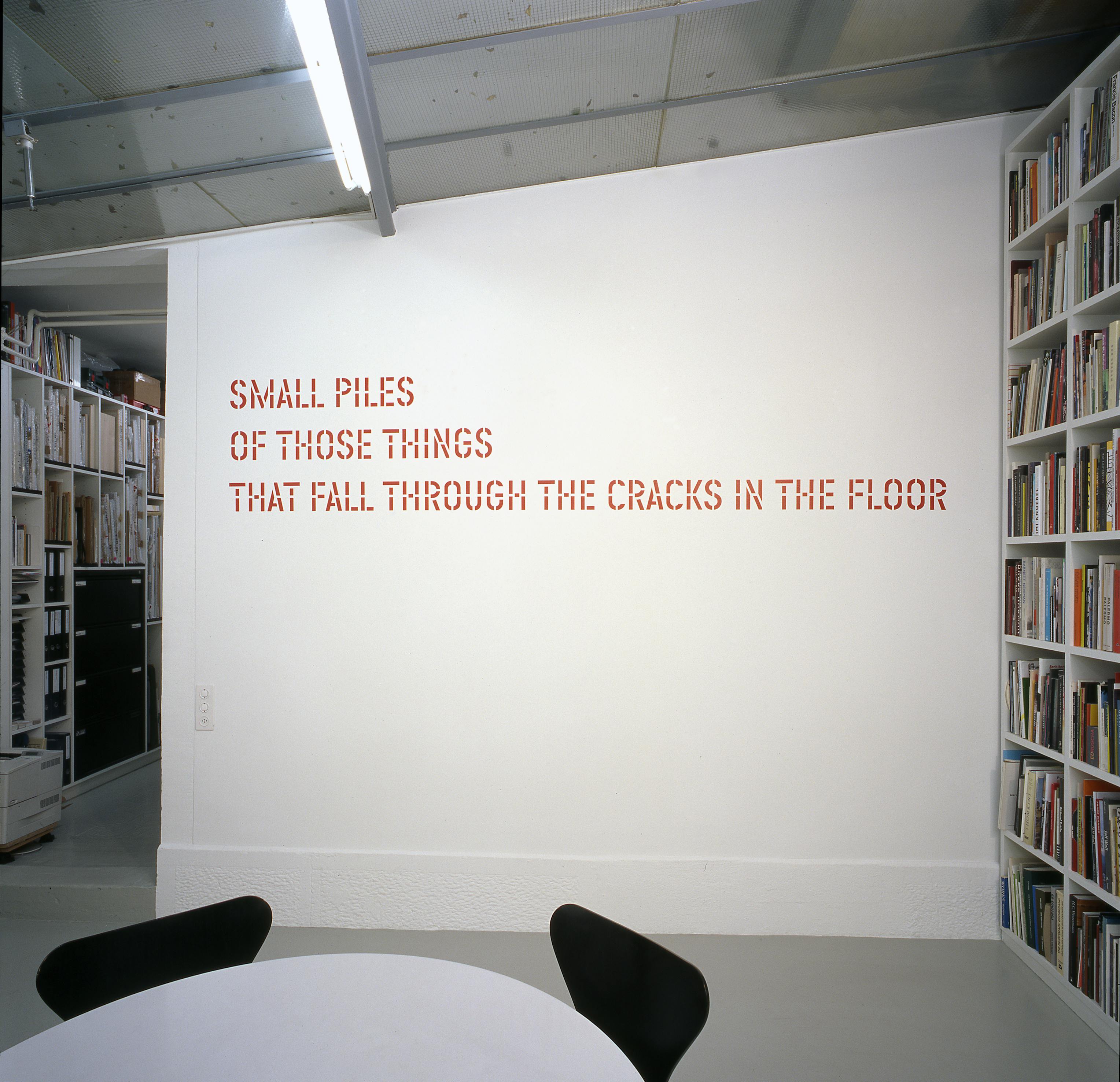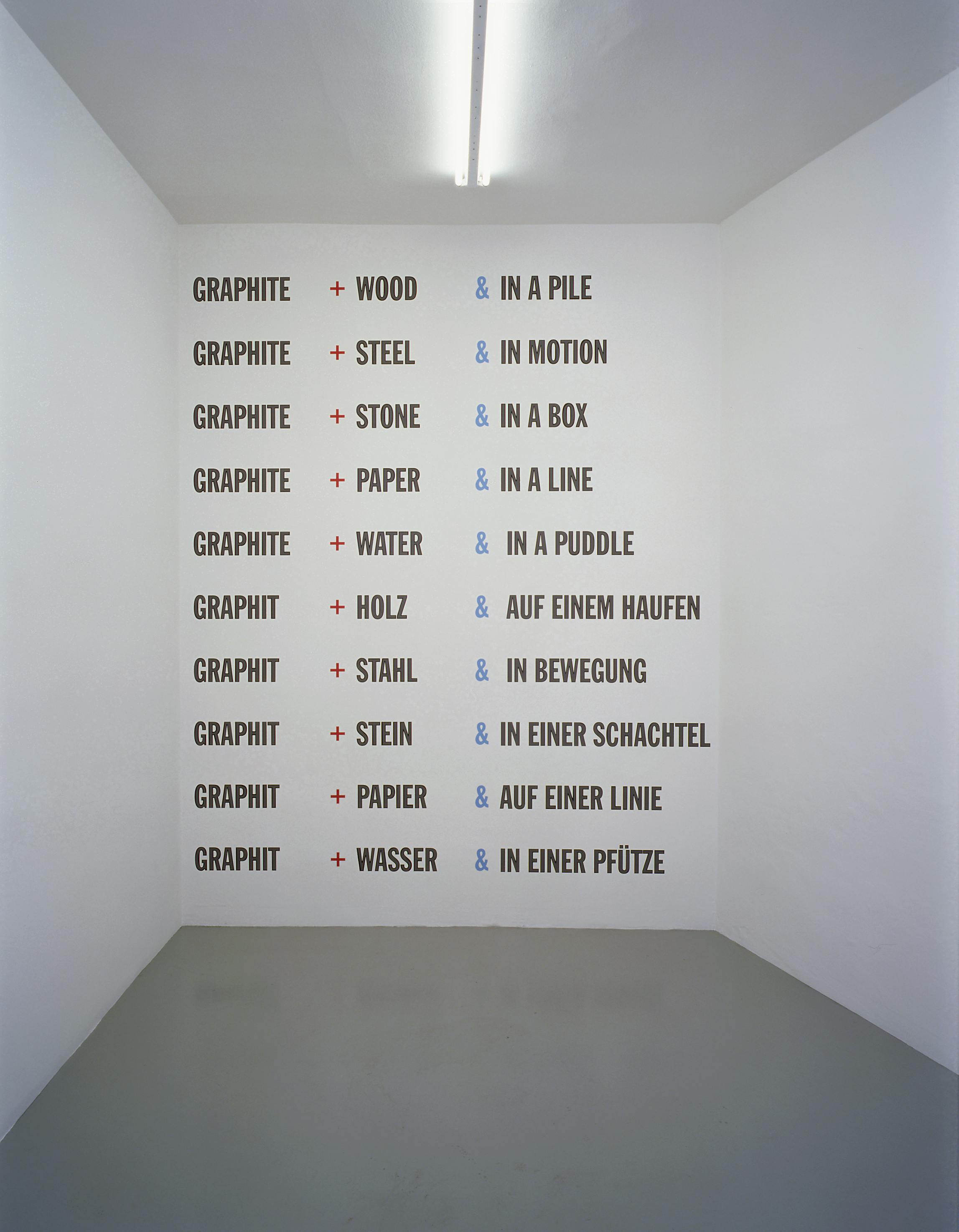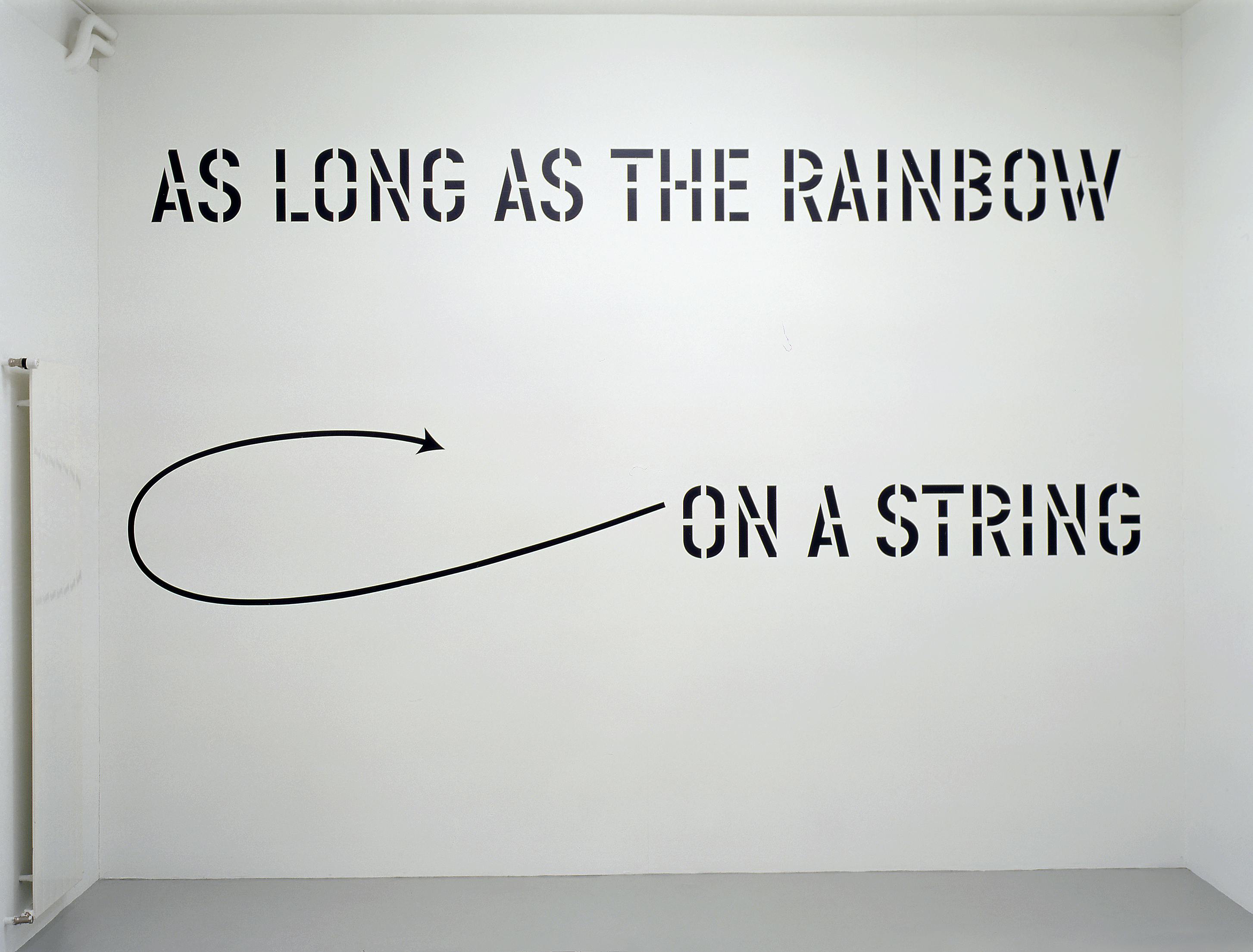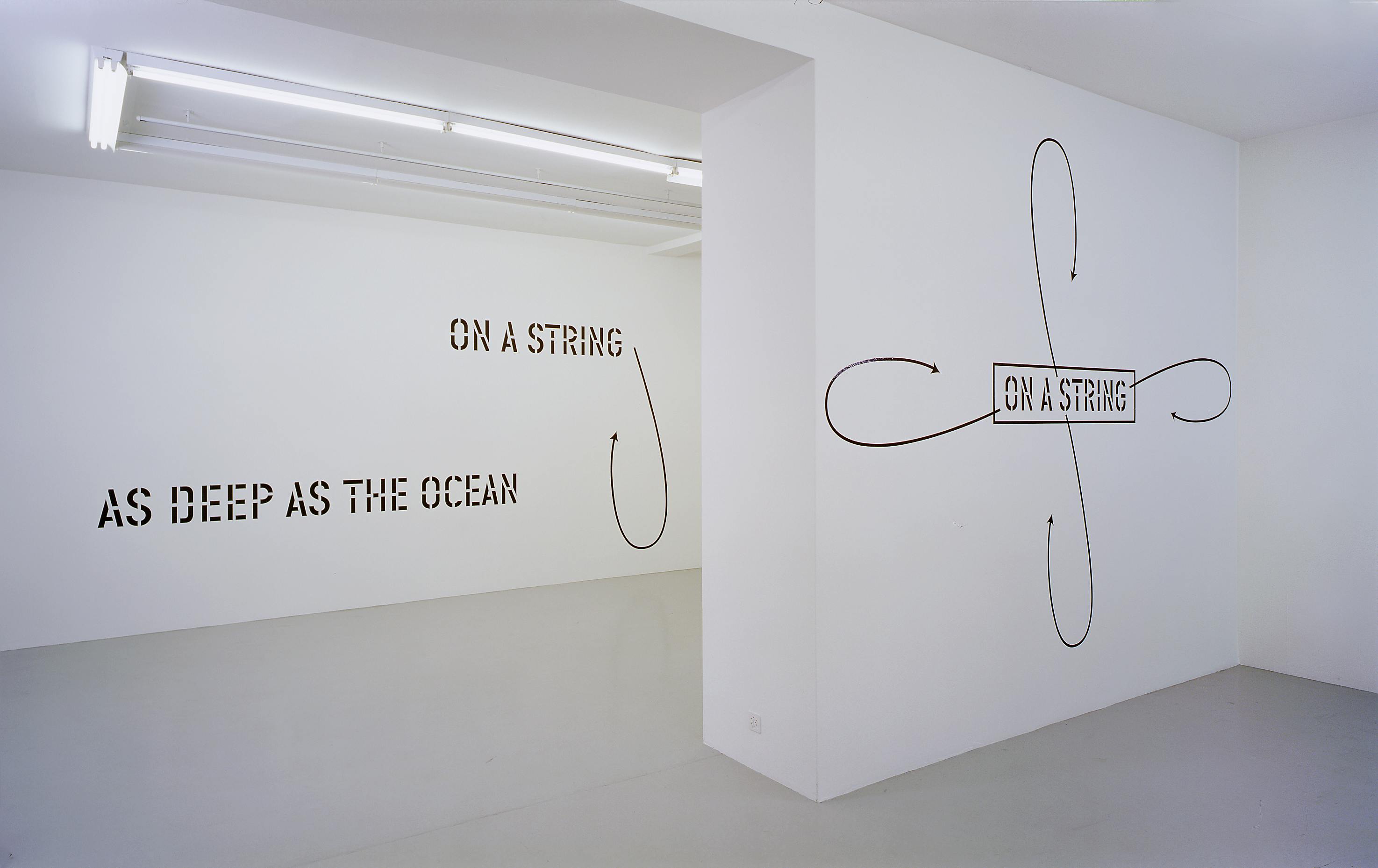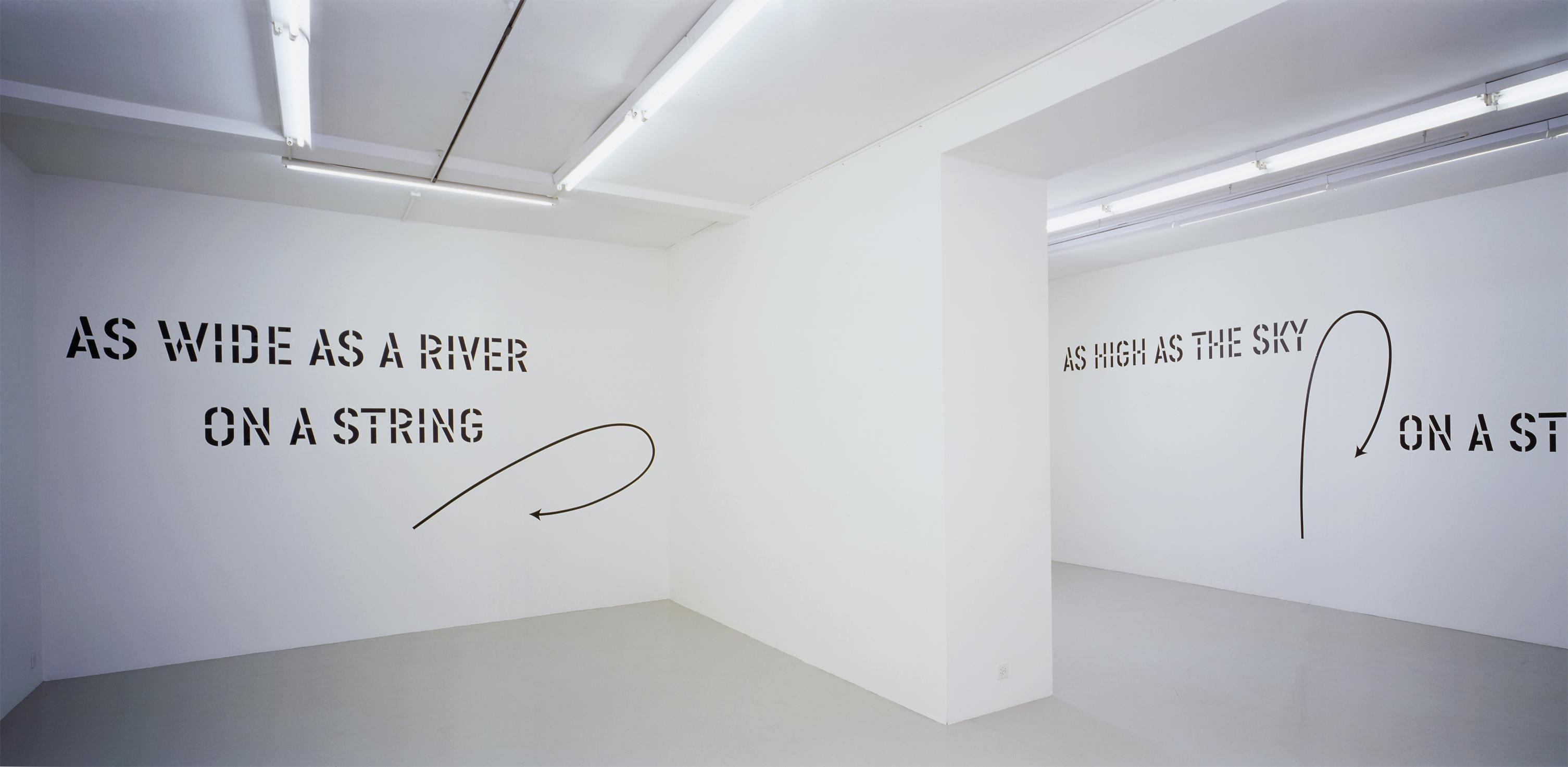We are pleased to be able to present new works by the American artist, Lawrence Weiner (b. 1942 in South Bronx, New York). Lawrence Weiner is one of the most important artists of our time. He lives and works in New York and Amsterdam.
Art is fabulous because it starts off as one thing and becomes something else for somebody. That is its whole function.
Lawrence Wiener in an interview with Benjamin H. Buchloh, 1998.
Lawrence Weiner has been working intensively with language since 1967. Emphasising the factuality of language, Weiner uses it as the medium for his work. As short linguistic messages condensed into ‘statements’, his works take different concrete forms as wall inscriptions, in books, on posters or on other objects. These can be expanded further by framing devices and drawing-like pictograms. Because of the close dovetailing of text and image Weiner once spoke in this connection of emblems. The artist has consistently held to the principles that have been valid from the end of the 1960s until today: “1. THE ARTIST MAY CONSTRUCT THE WORK / 2. THE WORK MAY BE FABRICATED / 3. THE WORK NEED NOT BE BUILT / EACH BEING EQUAL AND CONSISTENT WITH THE INTENT OF THE ARTIST THE DECISION AS TO CONDITION RESTS WITH THE RECEIVER UPON THE OCCASION OF RECEIVERSHIP.” Weiner’s use of language is characterised by openness and precision in equal measure. As he emphasised in an interview with Benjamin H. Buchloh, he is interested in the meaning of words and not in the fact that they are words. The theme of his work is the relationship between people and objects and the connections between objects and other objects. In holding on to the actuality of material things and their possible relations, Weiner throws up genuine questions about sculpture. In this way the emotional effect of language is to be excluded as much as possible. Weiner wants to separate language on the level of the work from its metaphorical character in order to attain the greatest possible universality and exemplariness. Hierarchical relationships built on power structures are therefore excluded from the beginning. Grammatically speaking, Weiner’s sentences are incomplete; subject and predicate, the details concerning actors and action are usually missing. The relations that he brings in are therefore open. The recipient can read their own observations and associations into Weiner’s statements, however at the same time they are referred over and again to the factuality and autonomy of these.
It is particularly as installations that Weiner’s work confronts the observer with great physical presence. They surround the viewer in a sensual form and lead to an intensified perception of the moment. In this way they oscillate between the concrete spatial form of the work and the space for the imagination that this opens up. The power of the visual that can also be clearly understood as emancipatory is therefore at the heart of Lawrence Weiner’s work.






